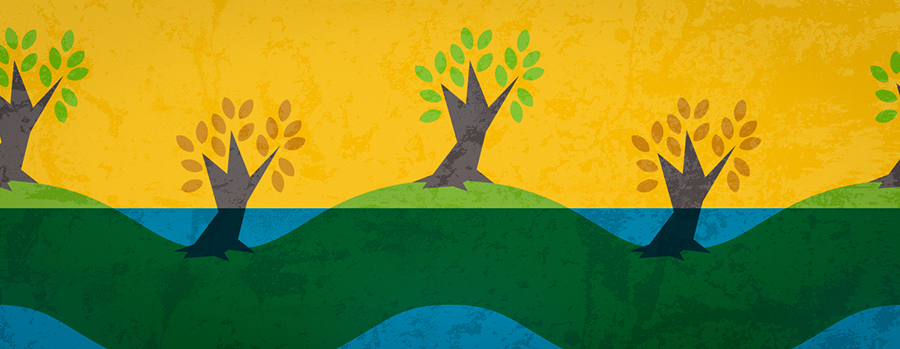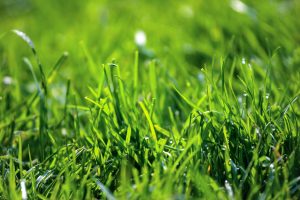
While helping a neighbor demo their home after the extensive flooding here in Louisiana, it struck me just how much damage was done to the lawn, shrubs and smaller trees throughout their landscape.
It’s been (ahem) quite a few years since I took the Certified Nursery & Landscape Professional (CNLP) exam, but I’d like to share some basic knowledge and tips regarding the rejuvenation, or renovation, of your greenspace.
I know it’s difficult if you have suffered a loss; your landscape is probably the least of your worries at this point, but after all, your yard is also an important part of your property.
First, the bad news.
 The first step should be a no-brainer, but I have to say it – wait until the water has completely subsided before any work begins. You’re not going to accomplish much and there is an inherent danger involved if the water hasn’t receded.
The first step should be a no-brainer, but I have to say it – wait until the water has completely subsided before any work begins. You’re not going to accomplish much and there is an inherent danger involved if the water hasn’t receded.
Some bad news – chances are extremely high that if you still have standing water in the grassy surface areas – it’s dead. Unfortunately, a re-sod or re-seeding of your lawn will have to take place.
But, some good news – most native or established trees, shrubs, bulbs and ornamentals are surprisingly hardy in the face of adverse conditions. Historically, this is a wet state.
My dumpster is bigger than your dumpster.
Remove all debris from your landscape – the sheetrock, base molding, studs, appliances, furniture, wiring, nails, glass, insulation – everything. Debris will retard the growth process and there’s the issue of chemicals leaching into the soil. Did I mention the potential issue with vermin? We hate vermin.
Got mulch?
Any mulch that wasn’t washed away needs to be removed. Assuming the mulch hasn’t been tainted or stewing in sewerage, this organic material can be placed into your compost pile or bin. Do not replace the mulch. Moisture and root protection is not an issue. Allow the base and roots of your plants to dry.
Mostly dead.
Pull or dig up any plants that are dead – they’re compost pile candidates now.
A cautionary note before pulling up or cutting down any plant-life: If you’re a fan of the movie, The Princess Bride, then you know there’s all dead and there’s mostly dead. There’s a big difference between mostly dead and all dead. Mostly dead is slightly alive.
movie, The Princess Bride, then you know there’s all dead and there’s mostly dead. There’s a big difference between mostly dead and all dead. Mostly dead is slightly alive.
Some plants can be like that. Take rose bushes for instance. I’ve picked up zombie-looking rose bushes off the side of a highway before and those are now some of the most vigorous plants in my yard.
So, if you’re in doubt whether a plant is “all” dead, simply wait until spring or its primary growing season.
If you have medium-size or larger trees that are dead or damaged, please call a licensed arborist or tree specialist to do the work. Do not be tempted to DIY. Danger, bubba. Big, water-logged trees are not to be trifled with.
Lawn aerobics.
Aerate – just like you, your lawn and its topsoil need to breathe.
Aeration or oxygenation is a huge part of rejuvenating the grassy surface areas. To say these areas have been oversaturated is an understatement. Chances are also high that most of these areas are now extremely compacted due to debris overlying the surface or by foot  traffic. You need to get air circulating throughout your topsoil to promote future plant growth.
traffic. You need to get air circulating throughout your topsoil to promote future plant growth.
Jabbing your lawn with the tines of a pitchfork is one way to go about aerating your lawn, although that is time-consuming and you’ll probably get some odd looks from the neighbors. Walking around the yard wearing a pair of old-school, metal-spiked golf shoes is a trick I used to use. These days, I use the original garden weasel tool. These methods are all good, but for the larger scale cultivation that you’re facing, a gas-powered, core aerator will be needed. No need to buy – these can easily be rented.
We’re gonna need a bigger boat.
Plan and replace. I guess if you’re looking for a silver lining behind the flood-producing clouds, this could be it. While we’re lucky to live in an area like southwest Louisiana where “if it’s green it will grow,” there’s not much you can do in the face of a 1,000-year flood event, Noah. It’s heartbreaking to lose personal and family possessions (plants and trees included), but try to look at this event as an opportunity to improve or enhance.
The rainbows and unicorns part of the story.
We’ve been blessed with a very robust ecosystem here. Just take a look at our St. Augustine, live oaks, cypress, azaleas and camellias. You can take advantage of our climate by utilizing our native or southern heritage plants. Keyword: native. There’s a scientific reason those centuries-old live oaks are still standing!
Make it fun for the family and make your landscape work for you once the home rebuilding gets squared away. Or, contact a local certified nursery & landscape professional, arborist or a licensed landscape horticulturist. They’ll be more than happy to work out a plan with you and within a budget to make some magic happen.

